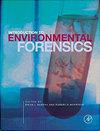在多方污染情况下制定两阶段责任分配程序
IF 1.2
4区 环境科学与生态学
Q4 ENVIRONMENTAL SCIENCES
引用次数: 1
摘要
本文章由计算机程序翻译,如有差异,请以英文原文为准。
Development of a two stage liability allocation process in case of multiple party pollution
Abstract Liability allocation in pollution incidents involving multiple polluters is a challenging task even in cases where thorough forensic investigation has been carried out. A two-stage liability allocation process, i.e., technical liability allocation carried out by technical experts followed by legal liability allocation, is suggested for adoption in such cases. The liability allocation may be required for the impacts of pollution and/or for remediation of the polluted site. The first stage of liability allocation, i.e., technical liability allocation is discussed in the paper. The study identified and evaluated the most relevant technical factors that should be considered for responsibility allocation. These factors, quantified from the results of an environmental forensic investigation, can be aggregated as ‘Impact index’ and ’Remediation index’ for use in liability allocation. A method for the estimation of ’Impact index’ and ’Remediation index’ is suggested. The study argues that the overall liability allocation can be made more efficient and faster when the liability allocation is a two-stage process.
求助全文
通过发布文献求助,成功后即可免费获取论文全文。
去求助
来源期刊

Environmental Forensics
环境科学-环境科学
CiteScore
4.90
自引率
5.60%
发文量
23
审稿时长
3 months
期刊介绍:
Environmental Forensics provides a forum for scientific investigations that address environment contamination, its sources, and the historical reconstruction of its release into the environment. The context for investigations that form the published papers in the journal are often subjects to regulatory or legal proceedings, public scrutiny, and debate. In all contexts, rigorous scientific underpinnings guide the subject investigations.
Specifically, the journal is an international, quarterly, peer-reviewed publication offering scientific studies that explore or are relevant to the source, age, fate, transport, as well as human health and ecological effects of environmental contamination. Journal subject matter encompasses all aspects of contamination mentioned above within the environmental media of air, water, soil, sediments and biota. Data evaluation and analysis approaches are highlighted as well including multivariate statistical methods. Journal focus is on scientific and technical information, data, and critical analysis in the following areas:
-Contaminant Fingerprinting for source identification and/or age-dating, including (but not limited to) chemical, isotopic, chiral, mineralogical/microscopy techniques, DNA and tree-ring fingerprinting
-Specific Evaluative Techniques for source identification and/or age-dating including (but not limited to) historical document and aerial photography review, signature chemicals, atmospheric tracers and markets forensics, background concentration evaluations.
-Statistical Evaluation, Contaminant Modeling and Data Visualization
-Vapor Intrusion including delineating the source and background values of indoor air contamination
-Integrated Case Studies, employing environmental fate techniques
-Legal Considerations, including strategic considerations for environmental fate in litigation and arbitration, and regulatory statutes and actions
 求助内容:
求助内容: 应助结果提醒方式:
应助结果提醒方式:


